Europe and drone wall: Vague idea hindered by bureaucracy and indifference
global.espreso.tv
Thu, 09 Oct 2025 12:56:00 +0300

Contents1. Why did the idea of a drone wall emerge?2. What is a drone wall?3. What are the European and Ukrainian visions for the project?4. Criticism and challenges: EU bureaucracy and limited public attention Implementing this ambitious project faces bureaucracy, funding disputes, low public attention, and differing views among allies on the role of this “wall.” Whether it will become a real barrier to Putin’s drones or just another paper plan for show is explored in more detail by Espreso.Why did the idea of a drone wall emerge?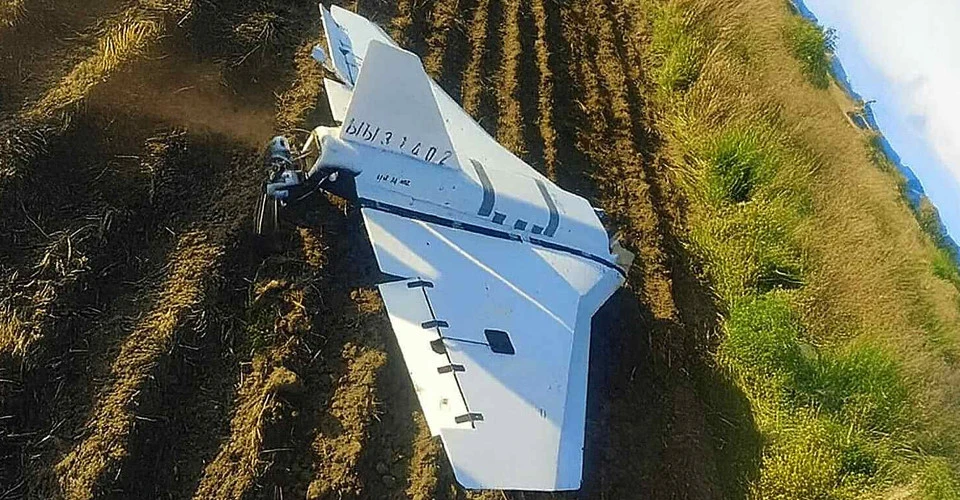 In addition to Russian aircraft that regularly violate NATO airspace, there have recently been flights of “unidentified drones” not only near Eastern European borders but also in the heart of the continent — in Germany, Denmark, Norway, and other countries (likely launched from Russian “shadow fleet” tankers).But it was the two dozen drones in Poland a month ago that caused a stir — they exposed significant gaps in Europe’s ability to defend against unmanned aerial vehicles, which kicked off the idea of creating a drone wall to counter them.After all, these hybrid attacks paralyze airport operations, create threats near military bases, and also pose dangers to civilians. However, cheap UAVs (costing a few thousand dollars) can cost millions to intercept with traditional means like Patriots or fighter jets, which can drain Europe’s already limited military resources.“It is not sustainable that you would take down thousand or two-thousand dollar costing drones with missiles that cost you maybe half a million or a million dollars,” said NATO Secretary-General Mark Rutte.Therefore, despite the obvious threats from Russia, which has been at war with Ukraine for years, the EU has only now begun exploring ways to counter drones and allocate funding for it. Although the idea was first proposed earlier this year by the Baltic states and Poland, suggesting joint defense against Russian UAVs, the European Commission initially rejected the funding request. Now, the approach has changed.Meanwhile on the front line Ukraine has already built its own drone line — a multi‑layered defense of acoustic sensors and interceptors that creates a “kill zone” about 20 kilometres deep. The Atlantic Council calls this “the first line of Europe’s defense against Russia.” In practice, Ukrainian forces are the most experienced in Europe at countering various types of Russian drones because of the constant combined attacks they face, and they have developed many low‑cost ways to down UAVs. So it’s no surprise that the Ukrainian Armed Forces have begun training colleagues from other countries — as the Ukraine’s General Staff reported, its specialists are currently sharing their experience in Denmark.
In addition to Russian aircraft that regularly violate NATO airspace, there have recently been flights of “unidentified drones” not only near Eastern European borders but also in the heart of the continent — in Germany, Denmark, Norway, and other countries (likely launched from Russian “shadow fleet” tankers).But it was the two dozen drones in Poland a month ago that caused a stir — they exposed significant gaps in Europe’s ability to defend against unmanned aerial vehicles, which kicked off the idea of creating a drone wall to counter them.After all, these hybrid attacks paralyze airport operations, create threats near military bases, and also pose dangers to civilians. However, cheap UAVs (costing a few thousand dollars) can cost millions to intercept with traditional means like Patriots or fighter jets, which can drain Europe’s already limited military resources.“It is not sustainable that you would take down thousand or two-thousand dollar costing drones with missiles that cost you maybe half a million or a million dollars,” said NATO Secretary-General Mark Rutte.Therefore, despite the obvious threats from Russia, which has been at war with Ukraine for years, the EU has only now begun exploring ways to counter drones and allocate funding for it. Although the idea was first proposed earlier this year by the Baltic states and Poland, suggesting joint defense against Russian UAVs, the European Commission initially rejected the funding request. Now, the approach has changed.Meanwhile on the front line Ukraine has already built its own drone line — a multi‑layered defense of acoustic sensors and interceptors that creates a “kill zone” about 20 kilometres deep. The Atlantic Council calls this “the first line of Europe’s defense against Russia.” In practice, Ukrainian forces are the most experienced in Europe at countering various types of Russian drones because of the constant combined attacks they face, and they have developed many low‑cost ways to down UAVs. So it’s no surprise that the Ukrainian Armed Forces have begun training colleagues from other countries — as the Ukraine’s General Staff reported, its specialists are currently sharing their experience in Denmark. “And there are experienced Ukrainians who know how to detect and shoot down attack drones. And they’ve already begun deploying their mission. And we are ready to share this experience with you, partners. And this is just the beginning – the first step on the path toward an effective Drone Wall to protect all of Europe,” said President Volodymyr Zelenskyy.Thus, the idea of a drone wall is an attempt to adapt Ukrainian experience to European realities, as Russian threats are no longer abstract. NATO intelligence agencies have long warned that Russia is preparing to attack the Alliance, most likely one of the Baltic states. Following numerous Russian hybrid attacks, European Commission President Ursula von der Leyen on October 8, perhaps for the first time, directly accused Russia of conducting hybrid warfare against the EU. It is therefore unsurprising, as BBC notes, that Europe has finally begun preparing for a possible large-scale war with Russia.What is a drone wall?
“And there are experienced Ukrainians who know how to detect and shoot down attack drones. And they’ve already begun deploying their mission. And we are ready to share this experience with you, partners. And this is just the beginning – the first step on the path toward an effective Drone Wall to protect all of Europe,” said President Volodymyr Zelenskyy.Thus, the idea of a drone wall is an attempt to adapt Ukrainian experience to European realities, as Russian threats are no longer abstract. NATO intelligence agencies have long warned that Russia is preparing to attack the Alliance, most likely one of the Baltic states. Following numerous Russian hybrid attacks, European Commission President Ursula von der Leyen on October 8, perhaps for the first time, directly accused Russia of conducting hybrid warfare against the EU. It is therefore unsurprising, as BBC notes, that Europe has finally begun preparing for a possible large-scale war with Russia.What is a drone wall?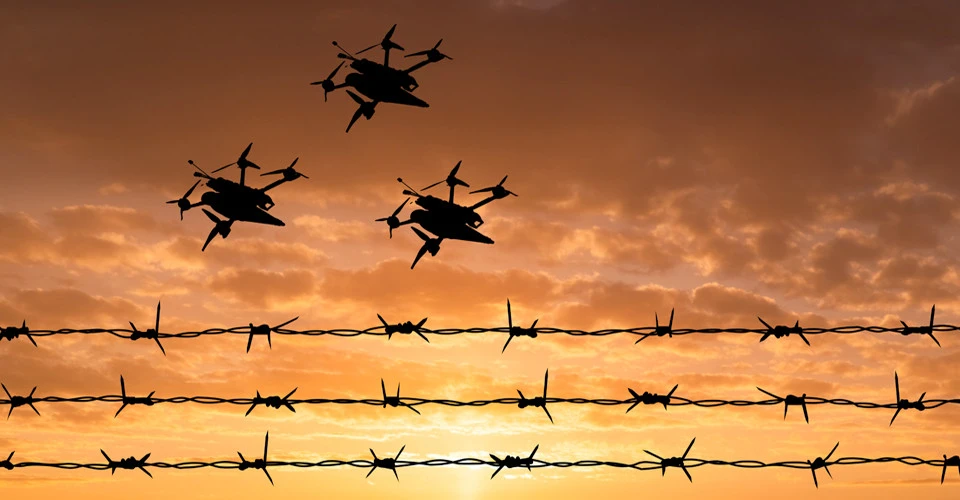 The drone wall is not a physical barrier but an integrated system for detecting and neutralizing UAVs along the EU’s eastern borders (from Finland to Romania, about 5,000 km long). Essentially, it is a multi‑layered counter‑drone network: radars and optical/RF sensors for detection, communications and data‑sharing systems between countries, electronic‑warfare tools (jamming/intercepting control), and physical means of destruction (from specialized MANPADS/air‑defense modules to lasers or interceptor drones).The idea is to create a coordinated system among many countries that will reduce “blind spots,” shorten detection times, and enable fast, coordinated responses. Moreover, the project is being integrated with NATO and includes maritime security and satellite surveillance, according to The New York Times.But, experts say, it should be understood that this drone wall does not promise absolute security — rather it speeds up drone detection and makes hybrid attacks more difficult for the aggressor."It should not be imagined as a wall that would make the EU impermeable to any incursion from Russia or Belarus, the main threats in this area," James Patton Rogers, a drone warfare expert at Cornell University, told France24. Julian Pawlak, a Baltic security specialist at the Bundeswehr University in Hamburg, added that it is "a political call to act, since there is no technical framework yet for such a defence system."On September 11, European Commission President Ursula von der Leyen publicly endorsed the idea of creating a drone wall, and on September 26, the defense ministers of 10 Eastern EU countries, along with Ukraine, agreed on a “roadmap” for the project, which could take anywhere from one to several years to implement, depending on the country.As Politico reports, the European Commission is currently working on the technical and financial details of building a “drone wall” to protect Europe from Russia. The project could be funded through the SAFE “weapons loans” scheme with €150 billion and the European Defence Industrial Programme (EDIP) with €1.5 billion, but Brussels is also considering other options. Approval has not yet been granted.What are the European and Ukrainian visions for the project?
The drone wall is not a physical barrier but an integrated system for detecting and neutralizing UAVs along the EU’s eastern borders (from Finland to Romania, about 5,000 km long). Essentially, it is a multi‑layered counter‑drone network: radars and optical/RF sensors for detection, communications and data‑sharing systems between countries, electronic‑warfare tools (jamming/intercepting control), and physical means of destruction (from specialized MANPADS/air‑defense modules to lasers or interceptor drones).The idea is to create a coordinated system among many countries that will reduce “blind spots,” shorten detection times, and enable fast, coordinated responses. Moreover, the project is being integrated with NATO and includes maritime security and satellite surveillance, according to The New York Times.But, experts say, it should be understood that this drone wall does not promise absolute security — rather it speeds up drone detection and makes hybrid attacks more difficult for the aggressor."It should not be imagined as a wall that would make the EU impermeable to any incursion from Russia or Belarus, the main threats in this area," James Patton Rogers, a drone warfare expert at Cornell University, told France24. Julian Pawlak, a Baltic security specialist at the Bundeswehr University in Hamburg, added that it is "a political call to act, since there is no technical framework yet for such a defence system."On September 11, European Commission President Ursula von der Leyen publicly endorsed the idea of creating a drone wall, and on September 26, the defense ministers of 10 Eastern EU countries, along with Ukraine, agreed on a “roadmap” for the project, which could take anywhere from one to several years to implement, depending on the country.As Politico reports, the European Commission is currently working on the technical and financial details of building a “drone wall” to protect Europe from Russia. The project could be funded through the SAFE “weapons loans” scheme with €150 billion and the European Defence Industrial Programme (EDIP) with €1.5 billion, but Brussels is also considering other options. Approval has not yet been granted.What are the European and Ukrainian visions for the project?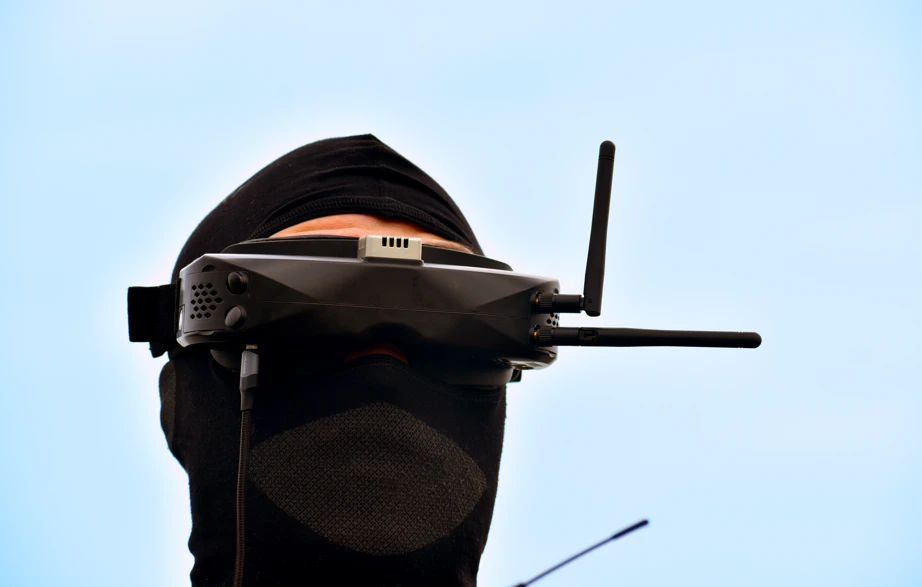 Europeans have different views on the drone wall, reflecting the difficulty of reaching decisions within the EU’s cumbersome structure.The Eastern flank (Poland, the Baltics, Finland, Romania) sees it as an urgent necessity for the collective security of their territories against new forms of aggression, as Russian hybrid attacks increasingly penetrate their airspace. They therefore support building it within a year, or even faster.Meanwhile, other Western capitals (Berlin, Paris, Rome) are urging caution and advocate combining civilian and military defense tools (for example, integrating air traffic control, border services, and critical infrastructure systems). German Defense Minister Boris Pistorius viewed the rush skeptically, warning that such a project could take 3–4 years to implement, while the Italian Prime Minister and French President insist the project cover the entire EU, including southern borders due to migration and terrorism, calling for a comprehensive approach.In Ukraine the idea is met ambivalently but with a clear willingness to help. First, it’s seen as a necessary step to protect Europe, since Ukrainian experience in countering mass drone attacks is invaluable. Second, it’s viewed as an opportunity to deepen defence cooperation and integrate European and Ukrainian industry in producing both UAVs and countermeasures, thereby boosting Ukraine’s military-industrial potential. Ideally, Ukraine would like to shoot down Russian drones and missiles together with its partners — a point Volodymyr Zelenskyy has made repeatedly. In practice, however, such initiatives are often stalled for years by Western fears of a direct NATO–Russia confrontation.Overall, at the recent European Community summit in Copenhagen on October 1–2, leaders gave “broad support” to the drone wall project but without a clear vision for implementation. As Politico notes, this is the EU’s perennial problem — Europeans “choose to talk about a crisis instead of resolving it.”Criticism and challenges: EU bureaucracy and limited public attention
Europeans have different views on the drone wall, reflecting the difficulty of reaching decisions within the EU’s cumbersome structure.The Eastern flank (Poland, the Baltics, Finland, Romania) sees it as an urgent necessity for the collective security of their territories against new forms of aggression, as Russian hybrid attacks increasingly penetrate their airspace. They therefore support building it within a year, or even faster.Meanwhile, other Western capitals (Berlin, Paris, Rome) are urging caution and advocate combining civilian and military defense tools (for example, integrating air traffic control, border services, and critical infrastructure systems). German Defense Minister Boris Pistorius viewed the rush skeptically, warning that such a project could take 3–4 years to implement, while the Italian Prime Minister and French President insist the project cover the entire EU, including southern borders due to migration and terrorism, calling for a comprehensive approach.In Ukraine the idea is met ambivalently but with a clear willingness to help. First, it’s seen as a necessary step to protect Europe, since Ukrainian experience in countering mass drone attacks is invaluable. Second, it’s viewed as an opportunity to deepen defence cooperation and integrate European and Ukrainian industry in producing both UAVs and countermeasures, thereby boosting Ukraine’s military-industrial potential. Ideally, Ukraine would like to shoot down Russian drones and missiles together with its partners — a point Volodymyr Zelenskyy has made repeatedly. In practice, however, such initiatives are often stalled for years by Western fears of a direct NATO–Russia confrontation.Overall, at the recent European Community summit in Copenhagen on October 1–2, leaders gave “broad support” to the drone wall project but without a clear vision for implementation. As Politico notes, this is the EU’s perennial problem — Europeans “choose to talk about a crisis instead of resolving it.”Criticism and challenges: EU bureaucracy and limited public attention 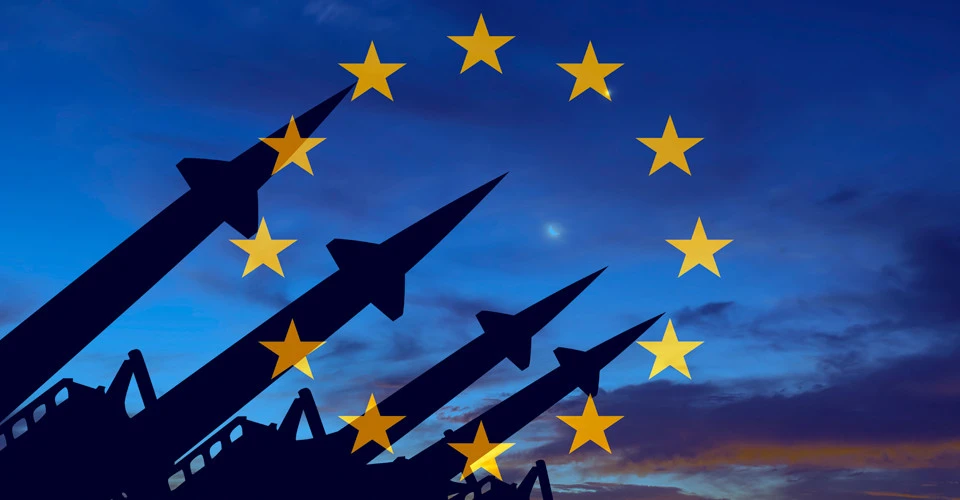 Although the idea is generally politically popular among EU leaders, the question of “who pays for what and how much” remains unresolved. As a result, some countries without borders with Russia are blocking funding for the large-scale drone wall project, seeing the eastern focus as unfair since they face their own challenges — such as migration issues in the south.Defense One, citing an informed source in the negotiations, notes there are disagreements among EU members over key aspects of the “drone wall” plan — such as how quickly it should be built and how it would be managed — alongside other EU defence priorities.It is therefore unsurprising that collective decision-making processes in the EU always seem slow, and the Kremlin can exploit this — for example, to sow even greater discord among allies in the meantime. Clearly, the current rise in hybrid drone attacks aims not only to test NATO’s defenses but also to intimidate Western capitals and reduce military aid to Ukraine.The EU is a complex structure with varying defense approaches among member states. For the system to operate in real time, technical interoperability must be ensured, a legal framework agreed upon (the right to use weapons against drones over another country’s territory or international airspace), and rapid intelligence sharing established. This takes time and requires political unity, which is sometimes lacking. The European Parliament and other institutions have already called for concrete steps, noting that proposals for the “drone wall” are still too “diffuse.” Without clear funding or a timeline, technical challenges also arise, especially as the “arms race” in this modern drone warfare continues to evolve.“You can build a good defense system. The question is who will decide and how quickly to activate it. Who will give the order and take responsibility, press the ‘launch’ button, like 10 years ago when a Russian fighter briefly entered Turkish airspace while operating over Syria — it was completely shot down and neutralized, and that was the end; no further incursions occurred. The question is, who in the European capitals will make such decisions — that’s a political decision,” Valeriy Borovyk, a Ukrainian Armed Forces serviceman and founder of the drone manufacturer “First Contact,” told Espreso.Additionally, it is important to remember that there is a significant imbalance in how the European public perceives Russian threats: the farther a country is from Ukraine or Russia’s borders, the less acute this awareness tends to be.
Although the idea is generally politically popular among EU leaders, the question of “who pays for what and how much” remains unresolved. As a result, some countries without borders with Russia are blocking funding for the large-scale drone wall project, seeing the eastern focus as unfair since they face their own challenges — such as migration issues in the south.Defense One, citing an informed source in the negotiations, notes there are disagreements among EU members over key aspects of the “drone wall” plan — such as how quickly it should be built and how it would be managed — alongside other EU defence priorities.It is therefore unsurprising that collective decision-making processes in the EU always seem slow, and the Kremlin can exploit this — for example, to sow even greater discord among allies in the meantime. Clearly, the current rise in hybrid drone attacks aims not only to test NATO’s defenses but also to intimidate Western capitals and reduce military aid to Ukraine.The EU is a complex structure with varying defense approaches among member states. For the system to operate in real time, technical interoperability must be ensured, a legal framework agreed upon (the right to use weapons against drones over another country’s territory or international airspace), and rapid intelligence sharing established. This takes time and requires political unity, which is sometimes lacking. The European Parliament and other institutions have already called for concrete steps, noting that proposals for the “drone wall” are still too “diffuse.” Without clear funding or a timeline, technical challenges also arise, especially as the “arms race” in this modern drone warfare continues to evolve.“You can build a good defense system. The question is who will decide and how quickly to activate it. Who will give the order and take responsibility, press the ‘launch’ button, like 10 years ago when a Russian fighter briefly entered Turkish airspace while operating over Syria — it was completely shot down and neutralized, and that was the end; no further incursions occurred. The question is, who in the European capitals will make such decisions — that’s a political decision,” Valeriy Borovyk, a Ukrainian Armed Forces serviceman and founder of the drone manufacturer “First Contact,” told Espreso.Additionally, it is important to remember that there is a significant imbalance in how the European public perceives Russian threats: the farther a country is from Ukraine or Russia’s borders, the less acute this awareness tends to be.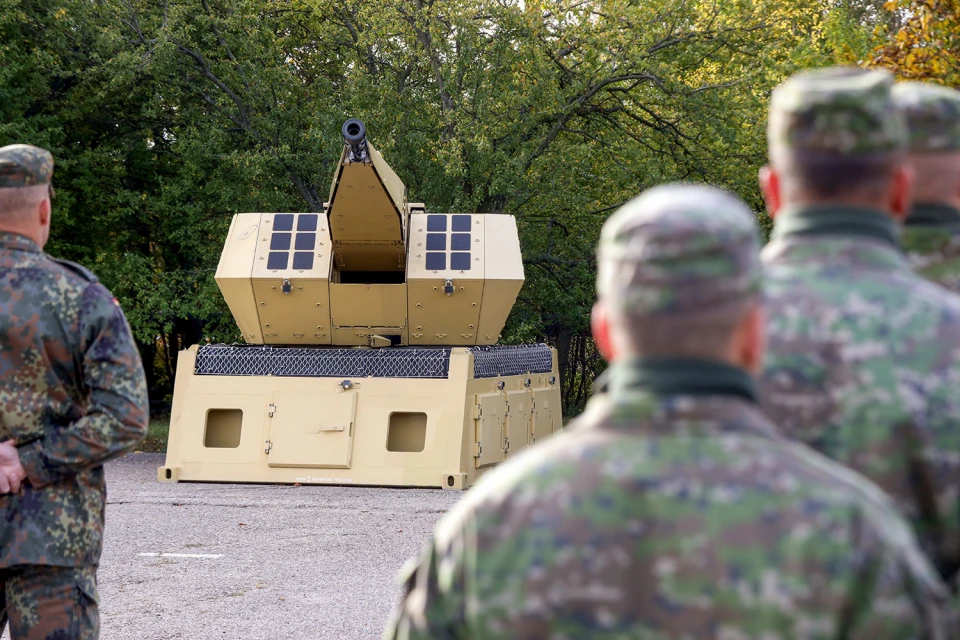 Viktoriya Feshak, a Ukrainian activist with the organization Vitsche Berlin living in Germany, told Espreso that German society pays almost no attention to the issue of Russian drones, which occasionally enter their airspace.According to her, the public is more fascinated by quirky trends — the latest example being a new craze where hundreds of young people gather to eat puddings with forks.“In my view, this is a very telling allegory of what is happening in Europe and how it is preparing for threats. Besides drone attacks on airports, Germany faces numerous cyberattacks. I’ve been working in security for six years, and there is indeed a lot of work. But do you know how society reacts? Almost not at all,” she said.The activist recalled the drone attack on Munich Airport on Friday, October 3 — coinciding with German Unity Day, when the city was hosting many tourists and Oktoberfest was underway. The incident forced the airport to temporarily close, causing millions in damages.“The Germans say: it was an unidentified drone — it flew in and flew out. That’s it. Why? Because Germany simply has no law defining how to respond to such threats! Only now, after 11 years of war in Europe, have they begun to think about what to do with such drones, and are just starting to draft relevant legislation. At the state level, Germany has noticeably lagged behind modern warfare. They never even considered that drones could enter their airspace, as they imagined threats in the old way — in the form of tank attacks,” the activist said.Viktoriya Feshak adds that the German authorities are trying to mobilize society in the face of Russian threats: for example, trams now carry messages encouraging people to join the army. However, for now, this mostly creates an image rather than indicating any real, deeper changes.Indeed, as DW explains, Germany faces challenges in countering drones due to its historical legacy, federal system, and military restrictions after the Cold War. Its airspace is monitored by several agencies: the federal police, state police, and the Bundeswehr, making it often unclear who is responsible for which area. Although the Bundeswehr can shoot down drones, paradoxically, the Constitution prohibits the army from operating domestically due to lessons from Nazism. Accordingly, this responsibility falls to the police. However, legal gaps remain — for example, the Bavarian state government only initiated the necessary legal amendments on October 7 to allow police to shoot down unidentified drones.“At the legislative level, the federal government is drafting amendments to the Airspace Protection Act. The Bundeswehr’s powers are expected to be expanded,” DW notes.And this is just about Germany. In reality, almost every EU country has its own internal obstacles that hinder fully unlocking the potential to counter hostile drones and build a strong European drone wall. The challenges are numerous. Meanwhile, intelligence indicates that by 2030, Russia could be ready for a direct confrontation with NATO. The open question remains: will Europeans themselves be prepared?
Viktoriya Feshak, a Ukrainian activist with the organization Vitsche Berlin living in Germany, told Espreso that German society pays almost no attention to the issue of Russian drones, which occasionally enter their airspace.According to her, the public is more fascinated by quirky trends — the latest example being a new craze where hundreds of young people gather to eat puddings with forks.“In my view, this is a very telling allegory of what is happening in Europe and how it is preparing for threats. Besides drone attacks on airports, Germany faces numerous cyberattacks. I’ve been working in security for six years, and there is indeed a lot of work. But do you know how society reacts? Almost not at all,” she said.The activist recalled the drone attack on Munich Airport on Friday, October 3 — coinciding with German Unity Day, when the city was hosting many tourists and Oktoberfest was underway. The incident forced the airport to temporarily close, causing millions in damages.“The Germans say: it was an unidentified drone — it flew in and flew out. That’s it. Why? Because Germany simply has no law defining how to respond to such threats! Only now, after 11 years of war in Europe, have they begun to think about what to do with such drones, and are just starting to draft relevant legislation. At the state level, Germany has noticeably lagged behind modern warfare. They never even considered that drones could enter their airspace, as they imagined threats in the old way — in the form of tank attacks,” the activist said.Viktoriya Feshak adds that the German authorities are trying to mobilize society in the face of Russian threats: for example, trams now carry messages encouraging people to join the army. However, for now, this mostly creates an image rather than indicating any real, deeper changes.Indeed, as DW explains, Germany faces challenges in countering drones due to its historical legacy, federal system, and military restrictions after the Cold War. Its airspace is monitored by several agencies: the federal police, state police, and the Bundeswehr, making it often unclear who is responsible for which area. Although the Bundeswehr can shoot down drones, paradoxically, the Constitution prohibits the army from operating domestically due to lessons from Nazism. Accordingly, this responsibility falls to the police. However, legal gaps remain — for example, the Bavarian state government only initiated the necessary legal amendments on October 7 to allow police to shoot down unidentified drones.“At the legislative level, the federal government is drafting amendments to the Airspace Protection Act. The Bundeswehr’s powers are expected to be expanded,” DW notes.And this is just about Germany. In reality, almost every EU country has its own internal obstacles that hinder fully unlocking the potential to counter hostile drones and build a strong European drone wall. The challenges are numerous. Meanwhile, intelligence indicates that by 2030, Russia could be ready for a direct confrontation with NATO. The open question remains: will Europeans themselves be prepared?
 In addition to Russian aircraft that regularly violate NATO airspace, there have recently been flights of “unidentified drones” not only near Eastern European borders but also in the heart of the continent — in Germany, Denmark, Norway, and other countries (likely launched from Russian “shadow fleet” tankers).But it was the two dozen drones in Poland a month ago that caused a stir — they exposed significant gaps in Europe’s ability to defend against unmanned aerial vehicles, which kicked off the idea of creating a drone wall to counter them.After all, these hybrid attacks paralyze airport operations, create threats near military bases, and also pose dangers to civilians. However, cheap UAVs (costing a few thousand dollars) can cost millions to intercept with traditional means like Patriots or fighter jets, which can drain Europe’s already limited military resources.“It is not sustainable that you would take down thousand or two-thousand dollar costing drones with missiles that cost you maybe half a million or a million dollars,” said NATO Secretary-General Mark Rutte.Therefore, despite the obvious threats from Russia, which has been at war with Ukraine for years, the EU has only now begun exploring ways to counter drones and allocate funding for it. Although the idea was first proposed earlier this year by the Baltic states and Poland, suggesting joint defense against Russian UAVs, the European Commission initially rejected the funding request. Now, the approach has changed.Meanwhile on the front line Ukraine has already built its own drone line — a multi‑layered defense of acoustic sensors and interceptors that creates a “kill zone” about 20 kilometres deep. The Atlantic Council calls this “the first line of Europe’s defense against Russia.” In practice, Ukrainian forces are the most experienced in Europe at countering various types of Russian drones because of the constant combined attacks they face, and they have developed many low‑cost ways to down UAVs. So it’s no surprise that the Ukrainian Armed Forces have begun training colleagues from other countries — as the Ukraine’s General Staff reported, its specialists are currently sharing their experience in Denmark.
In addition to Russian aircraft that regularly violate NATO airspace, there have recently been flights of “unidentified drones” not only near Eastern European borders but also in the heart of the continent — in Germany, Denmark, Norway, and other countries (likely launched from Russian “shadow fleet” tankers).But it was the two dozen drones in Poland a month ago that caused a stir — they exposed significant gaps in Europe’s ability to defend against unmanned aerial vehicles, which kicked off the idea of creating a drone wall to counter them.After all, these hybrid attacks paralyze airport operations, create threats near military bases, and also pose dangers to civilians. However, cheap UAVs (costing a few thousand dollars) can cost millions to intercept with traditional means like Patriots or fighter jets, which can drain Europe’s already limited military resources.“It is not sustainable that you would take down thousand or two-thousand dollar costing drones with missiles that cost you maybe half a million or a million dollars,” said NATO Secretary-General Mark Rutte.Therefore, despite the obvious threats from Russia, which has been at war with Ukraine for years, the EU has only now begun exploring ways to counter drones and allocate funding for it. Although the idea was first proposed earlier this year by the Baltic states and Poland, suggesting joint defense against Russian UAVs, the European Commission initially rejected the funding request. Now, the approach has changed.Meanwhile on the front line Ukraine has already built its own drone line — a multi‑layered defense of acoustic sensors and interceptors that creates a “kill zone” about 20 kilometres deep. The Atlantic Council calls this “the first line of Europe’s defense against Russia.” In practice, Ukrainian forces are the most experienced in Europe at countering various types of Russian drones because of the constant combined attacks they face, and they have developed many low‑cost ways to down UAVs. So it’s no surprise that the Ukrainian Armed Forces have begun training colleagues from other countries — as the Ukraine’s General Staff reported, its specialists are currently sharing their experience in Denmark. “And there are experienced Ukrainians who know how to detect and shoot down attack drones. And they’ve already begun deploying their mission. And we are ready to share this experience with you, partners. And this is just the beginning – the first step on the path toward an effective Drone Wall to protect all of Europe,” said President Volodymyr Zelenskyy.Thus, the idea of a drone wall is an attempt to adapt Ukrainian experience to European realities, as Russian threats are no longer abstract. NATO intelligence agencies have long warned that Russia is preparing to attack the Alliance, most likely one of the Baltic states. Following numerous Russian hybrid attacks, European Commission President Ursula von der Leyen on October 8, perhaps for the first time, directly accused Russia of conducting hybrid warfare against the EU. It is therefore unsurprising, as BBC notes, that Europe has finally begun preparing for a possible large-scale war with Russia.What is a drone wall?
“And there are experienced Ukrainians who know how to detect and shoot down attack drones. And they’ve already begun deploying their mission. And we are ready to share this experience with you, partners. And this is just the beginning – the first step on the path toward an effective Drone Wall to protect all of Europe,” said President Volodymyr Zelenskyy.Thus, the idea of a drone wall is an attempt to adapt Ukrainian experience to European realities, as Russian threats are no longer abstract. NATO intelligence agencies have long warned that Russia is preparing to attack the Alliance, most likely one of the Baltic states. Following numerous Russian hybrid attacks, European Commission President Ursula von der Leyen on October 8, perhaps for the first time, directly accused Russia of conducting hybrid warfare against the EU. It is therefore unsurprising, as BBC notes, that Europe has finally begun preparing for a possible large-scale war with Russia.What is a drone wall? The drone wall is not a physical barrier but an integrated system for detecting and neutralizing UAVs along the EU’s eastern borders (from Finland to Romania, about 5,000 km long). Essentially, it is a multi‑layered counter‑drone network: radars and optical/RF sensors for detection, communications and data‑sharing systems between countries, electronic‑warfare tools (jamming/intercepting control), and physical means of destruction (from specialized MANPADS/air‑defense modules to lasers or interceptor drones).The idea is to create a coordinated system among many countries that will reduce “blind spots,” shorten detection times, and enable fast, coordinated responses. Moreover, the project is being integrated with NATO and includes maritime security and satellite surveillance, according to The New York Times.But, experts say, it should be understood that this drone wall does not promise absolute security — rather it speeds up drone detection and makes hybrid attacks more difficult for the aggressor."It should not be imagined as a wall that would make the EU impermeable to any incursion from Russia or Belarus, the main threats in this area," James Patton Rogers, a drone warfare expert at Cornell University, told France24. Julian Pawlak, a Baltic security specialist at the Bundeswehr University in Hamburg, added that it is "a political call to act, since there is no technical framework yet for such a defence system."On September 11, European Commission President Ursula von der Leyen publicly endorsed the idea of creating a drone wall, and on September 26, the defense ministers of 10 Eastern EU countries, along with Ukraine, agreed on a “roadmap” for the project, which could take anywhere from one to several years to implement, depending on the country.As Politico reports, the European Commission is currently working on the technical and financial details of building a “drone wall” to protect Europe from Russia. The project could be funded through the SAFE “weapons loans” scheme with €150 billion and the European Defence Industrial Programme (EDIP) with €1.5 billion, but Brussels is also considering other options. Approval has not yet been granted.What are the European and Ukrainian visions for the project?
The drone wall is not a physical barrier but an integrated system for detecting and neutralizing UAVs along the EU’s eastern borders (from Finland to Romania, about 5,000 km long). Essentially, it is a multi‑layered counter‑drone network: radars and optical/RF sensors for detection, communications and data‑sharing systems between countries, electronic‑warfare tools (jamming/intercepting control), and physical means of destruction (from specialized MANPADS/air‑defense modules to lasers or interceptor drones).The idea is to create a coordinated system among many countries that will reduce “blind spots,” shorten detection times, and enable fast, coordinated responses. Moreover, the project is being integrated with NATO and includes maritime security and satellite surveillance, according to The New York Times.But, experts say, it should be understood that this drone wall does not promise absolute security — rather it speeds up drone detection and makes hybrid attacks more difficult for the aggressor."It should not be imagined as a wall that would make the EU impermeable to any incursion from Russia or Belarus, the main threats in this area," James Patton Rogers, a drone warfare expert at Cornell University, told France24. Julian Pawlak, a Baltic security specialist at the Bundeswehr University in Hamburg, added that it is "a political call to act, since there is no technical framework yet for such a defence system."On September 11, European Commission President Ursula von der Leyen publicly endorsed the idea of creating a drone wall, and on September 26, the defense ministers of 10 Eastern EU countries, along with Ukraine, agreed on a “roadmap” for the project, which could take anywhere from one to several years to implement, depending on the country.As Politico reports, the European Commission is currently working on the technical and financial details of building a “drone wall” to protect Europe from Russia. The project could be funded through the SAFE “weapons loans” scheme with €150 billion and the European Defence Industrial Programme (EDIP) with €1.5 billion, but Brussels is also considering other options. Approval has not yet been granted.What are the European and Ukrainian visions for the project? Europeans have different views on the drone wall, reflecting the difficulty of reaching decisions within the EU’s cumbersome structure.The Eastern flank (Poland, the Baltics, Finland, Romania) sees it as an urgent necessity for the collective security of their territories against new forms of aggression, as Russian hybrid attacks increasingly penetrate their airspace. They therefore support building it within a year, or even faster.Meanwhile, other Western capitals (Berlin, Paris, Rome) are urging caution and advocate combining civilian and military defense tools (for example, integrating air traffic control, border services, and critical infrastructure systems). German Defense Minister Boris Pistorius viewed the rush skeptically, warning that such a project could take 3–4 years to implement, while the Italian Prime Minister and French President insist the project cover the entire EU, including southern borders due to migration and terrorism, calling for a comprehensive approach.In Ukraine the idea is met ambivalently but with a clear willingness to help. First, it’s seen as a necessary step to protect Europe, since Ukrainian experience in countering mass drone attacks is invaluable. Second, it’s viewed as an opportunity to deepen defence cooperation and integrate European and Ukrainian industry in producing both UAVs and countermeasures, thereby boosting Ukraine’s military-industrial potential. Ideally, Ukraine would like to shoot down Russian drones and missiles together with its partners — a point Volodymyr Zelenskyy has made repeatedly. In practice, however, such initiatives are often stalled for years by Western fears of a direct NATO–Russia confrontation.Overall, at the recent European Community summit in Copenhagen on October 1–2, leaders gave “broad support” to the drone wall project but without a clear vision for implementation. As Politico notes, this is the EU’s perennial problem — Europeans “choose to talk about a crisis instead of resolving it.”Criticism and challenges: EU bureaucracy and limited public attention
Europeans have different views on the drone wall, reflecting the difficulty of reaching decisions within the EU’s cumbersome structure.The Eastern flank (Poland, the Baltics, Finland, Romania) sees it as an urgent necessity for the collective security of their territories against new forms of aggression, as Russian hybrid attacks increasingly penetrate their airspace. They therefore support building it within a year, or even faster.Meanwhile, other Western capitals (Berlin, Paris, Rome) are urging caution and advocate combining civilian and military defense tools (for example, integrating air traffic control, border services, and critical infrastructure systems). German Defense Minister Boris Pistorius viewed the rush skeptically, warning that such a project could take 3–4 years to implement, while the Italian Prime Minister and French President insist the project cover the entire EU, including southern borders due to migration and terrorism, calling for a comprehensive approach.In Ukraine the idea is met ambivalently but with a clear willingness to help. First, it’s seen as a necessary step to protect Europe, since Ukrainian experience in countering mass drone attacks is invaluable. Second, it’s viewed as an opportunity to deepen defence cooperation and integrate European and Ukrainian industry in producing both UAVs and countermeasures, thereby boosting Ukraine’s military-industrial potential. Ideally, Ukraine would like to shoot down Russian drones and missiles together with its partners — a point Volodymyr Zelenskyy has made repeatedly. In practice, however, such initiatives are often stalled for years by Western fears of a direct NATO–Russia confrontation.Overall, at the recent European Community summit in Copenhagen on October 1–2, leaders gave “broad support” to the drone wall project but without a clear vision for implementation. As Politico notes, this is the EU’s perennial problem — Europeans “choose to talk about a crisis instead of resolving it.”Criticism and challenges: EU bureaucracy and limited public attention  Although the idea is generally politically popular among EU leaders, the question of “who pays for what and how much” remains unresolved. As a result, some countries without borders with Russia are blocking funding for the large-scale drone wall project, seeing the eastern focus as unfair since they face their own challenges — such as migration issues in the south.Defense One, citing an informed source in the negotiations, notes there are disagreements among EU members over key aspects of the “drone wall” plan — such as how quickly it should be built and how it would be managed — alongside other EU defence priorities.It is therefore unsurprising that collective decision-making processes in the EU always seem slow, and the Kremlin can exploit this — for example, to sow even greater discord among allies in the meantime. Clearly, the current rise in hybrid drone attacks aims not only to test NATO’s defenses but also to intimidate Western capitals and reduce military aid to Ukraine.The EU is a complex structure with varying defense approaches among member states. For the system to operate in real time, technical interoperability must be ensured, a legal framework agreed upon (the right to use weapons against drones over another country’s territory or international airspace), and rapid intelligence sharing established. This takes time and requires political unity, which is sometimes lacking. The European Parliament and other institutions have already called for concrete steps, noting that proposals for the “drone wall” are still too “diffuse.” Without clear funding or a timeline, technical challenges also arise, especially as the “arms race” in this modern drone warfare continues to evolve.“You can build a good defense system. The question is who will decide and how quickly to activate it. Who will give the order and take responsibility, press the ‘launch’ button, like 10 years ago when a Russian fighter briefly entered Turkish airspace while operating over Syria — it was completely shot down and neutralized, and that was the end; no further incursions occurred. The question is, who in the European capitals will make such decisions — that’s a political decision,” Valeriy Borovyk, a Ukrainian Armed Forces serviceman and founder of the drone manufacturer “First Contact,” told Espreso.Additionally, it is important to remember that there is a significant imbalance in how the European public perceives Russian threats: the farther a country is from Ukraine or Russia’s borders, the less acute this awareness tends to be.
Although the idea is generally politically popular among EU leaders, the question of “who pays for what and how much” remains unresolved. As a result, some countries without borders with Russia are blocking funding for the large-scale drone wall project, seeing the eastern focus as unfair since they face their own challenges — such as migration issues in the south.Defense One, citing an informed source in the negotiations, notes there are disagreements among EU members over key aspects of the “drone wall” plan — such as how quickly it should be built and how it would be managed — alongside other EU defence priorities.It is therefore unsurprising that collective decision-making processes in the EU always seem slow, and the Kremlin can exploit this — for example, to sow even greater discord among allies in the meantime. Clearly, the current rise in hybrid drone attacks aims not only to test NATO’s defenses but also to intimidate Western capitals and reduce military aid to Ukraine.The EU is a complex structure with varying defense approaches among member states. For the system to operate in real time, technical interoperability must be ensured, a legal framework agreed upon (the right to use weapons against drones over another country’s territory or international airspace), and rapid intelligence sharing established. This takes time and requires political unity, which is sometimes lacking. The European Parliament and other institutions have already called for concrete steps, noting that proposals for the “drone wall” are still too “diffuse.” Without clear funding or a timeline, technical challenges also arise, especially as the “arms race” in this modern drone warfare continues to evolve.“You can build a good defense system. The question is who will decide and how quickly to activate it. Who will give the order and take responsibility, press the ‘launch’ button, like 10 years ago when a Russian fighter briefly entered Turkish airspace while operating over Syria — it was completely shot down and neutralized, and that was the end; no further incursions occurred. The question is, who in the European capitals will make such decisions — that’s a political decision,” Valeriy Borovyk, a Ukrainian Armed Forces serviceman and founder of the drone manufacturer “First Contact,” told Espreso.Additionally, it is important to remember that there is a significant imbalance in how the European public perceives Russian threats: the farther a country is from Ukraine or Russia’s borders, the less acute this awareness tends to be. Viktoriya Feshak, a Ukrainian activist with the organization Vitsche Berlin living in Germany, told Espreso that German society pays almost no attention to the issue of Russian drones, which occasionally enter their airspace.According to her, the public is more fascinated by quirky trends — the latest example being a new craze where hundreds of young people gather to eat puddings with forks.“In my view, this is a very telling allegory of what is happening in Europe and how it is preparing for threats. Besides drone attacks on airports, Germany faces numerous cyberattacks. I’ve been working in security for six years, and there is indeed a lot of work. But do you know how society reacts? Almost not at all,” she said.The activist recalled the drone attack on Munich Airport on Friday, October 3 — coinciding with German Unity Day, when the city was hosting many tourists and Oktoberfest was underway. The incident forced the airport to temporarily close, causing millions in damages.“The Germans say: it was an unidentified drone — it flew in and flew out. That’s it. Why? Because Germany simply has no law defining how to respond to such threats! Only now, after 11 years of war in Europe, have they begun to think about what to do with such drones, and are just starting to draft relevant legislation. At the state level, Germany has noticeably lagged behind modern warfare. They never even considered that drones could enter their airspace, as they imagined threats in the old way — in the form of tank attacks,” the activist said.Viktoriya Feshak adds that the German authorities are trying to mobilize society in the face of Russian threats: for example, trams now carry messages encouraging people to join the army. However, for now, this mostly creates an image rather than indicating any real, deeper changes.Indeed, as DW explains, Germany faces challenges in countering drones due to its historical legacy, federal system, and military restrictions after the Cold War. Its airspace is monitored by several agencies: the federal police, state police, and the Bundeswehr, making it often unclear who is responsible for which area. Although the Bundeswehr can shoot down drones, paradoxically, the Constitution prohibits the army from operating domestically due to lessons from Nazism. Accordingly, this responsibility falls to the police. However, legal gaps remain — for example, the Bavarian state government only initiated the necessary legal amendments on October 7 to allow police to shoot down unidentified drones.“At the legislative level, the federal government is drafting amendments to the Airspace Protection Act. The Bundeswehr’s powers are expected to be expanded,” DW notes.And this is just about Germany. In reality, almost every EU country has its own internal obstacles that hinder fully unlocking the potential to counter hostile drones and build a strong European drone wall. The challenges are numerous. Meanwhile, intelligence indicates that by 2030, Russia could be ready for a direct confrontation with NATO. The open question remains: will Europeans themselves be prepared?
Viktoriya Feshak, a Ukrainian activist with the organization Vitsche Berlin living in Germany, told Espreso that German society pays almost no attention to the issue of Russian drones, which occasionally enter their airspace.According to her, the public is more fascinated by quirky trends — the latest example being a new craze where hundreds of young people gather to eat puddings with forks.“In my view, this is a very telling allegory of what is happening in Europe and how it is preparing for threats. Besides drone attacks on airports, Germany faces numerous cyberattacks. I’ve been working in security for six years, and there is indeed a lot of work. But do you know how society reacts? Almost not at all,” she said.The activist recalled the drone attack on Munich Airport on Friday, October 3 — coinciding with German Unity Day, when the city was hosting many tourists and Oktoberfest was underway. The incident forced the airport to temporarily close, causing millions in damages.“The Germans say: it was an unidentified drone — it flew in and flew out. That’s it. Why? Because Germany simply has no law defining how to respond to such threats! Only now, after 11 years of war in Europe, have they begun to think about what to do with such drones, and are just starting to draft relevant legislation. At the state level, Germany has noticeably lagged behind modern warfare. They never even considered that drones could enter their airspace, as they imagined threats in the old way — in the form of tank attacks,” the activist said.Viktoriya Feshak adds that the German authorities are trying to mobilize society in the face of Russian threats: for example, trams now carry messages encouraging people to join the army. However, for now, this mostly creates an image rather than indicating any real, deeper changes.Indeed, as DW explains, Germany faces challenges in countering drones due to its historical legacy, federal system, and military restrictions after the Cold War. Its airspace is monitored by several agencies: the federal police, state police, and the Bundeswehr, making it often unclear who is responsible for which area. Although the Bundeswehr can shoot down drones, paradoxically, the Constitution prohibits the army from operating domestically due to lessons from Nazism. Accordingly, this responsibility falls to the police. However, legal gaps remain — for example, the Bavarian state government only initiated the necessary legal amendments on October 7 to allow police to shoot down unidentified drones.“At the legislative level, the federal government is drafting amendments to the Airspace Protection Act. The Bundeswehr’s powers are expected to be expanded,” DW notes.And this is just about Germany. In reality, almost every EU country has its own internal obstacles that hinder fully unlocking the potential to counter hostile drones and build a strong European drone wall. The challenges are numerous. Meanwhile, intelligence indicates that by 2030, Russia could be ready for a direct confrontation with NATO. The open question remains: will Europeans themselves be prepared?






